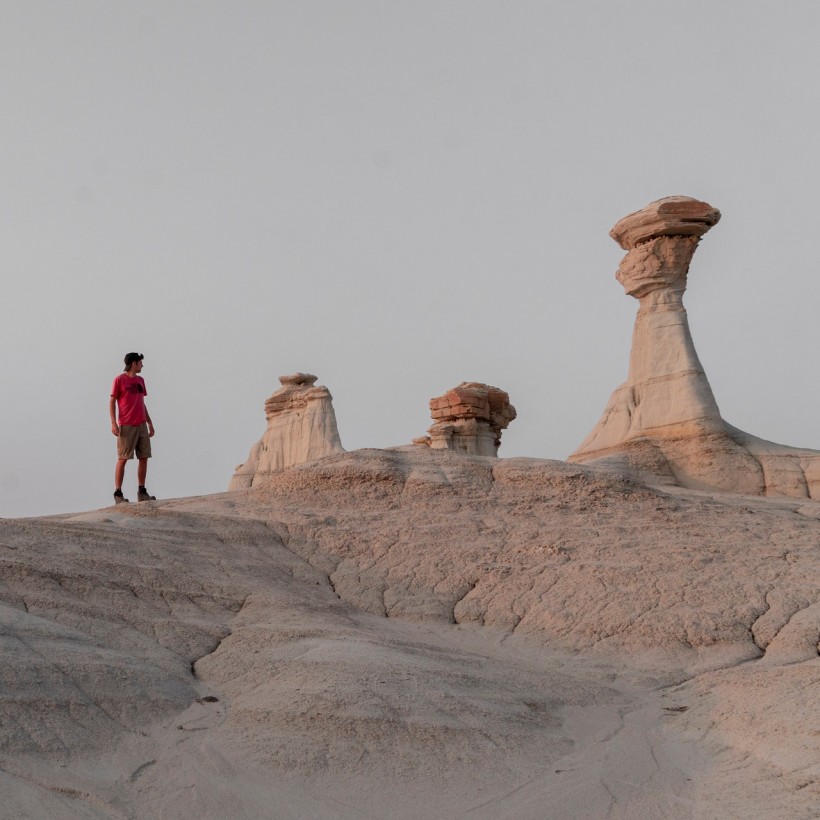New Mexico's Bisti/De-Na-Zin Wilderness is rich in formations and landscapes based on sandstones. Alongside its unique terrains, the place quietly resides under the vast bright skies, all with inhospitable sand dunes and massive rocks called hoodoos.
The geological formation of the Bisti/De-Na-Zin wilderness became a topic for many scientific studies, specifically in the paleontological field.
Previous Life in New Mexico's Wilderness

This patch in New Mexico was once full of lush greeneries during prehistory. In the inland area, the place held wide swamps and towering plants. Creatures such as mammalian groups, reptiles, and gigantic dinosaurs also resided in the region.
Until today, most of the predecessors of the Navajo (Diné) people are in charge of the preservation of the 41,170 fields. The wilderness had two names throughout history: Bisti, which translates to 'a large place of shale hills,' and De-Na-Zin, which means 'standing cranes.'
The Bisti/De-Na-Zin's highest peak is about 6,500 feet above sea level. Compared to this, the average level of the vast desert plain reaches 200 to 400 feet underground because of the erosion that occurred throughout millennia.
The Bisti/De-Na-Zin Wilderness served as an economic and social region for indigenous people near the place and other traveling merchants back in the early history. Alongside its functions, the place was also a seasonal migration path for the locals and the neighboring communities.
Bisti/De-Na-Zin Today
After thousands of years, the region of the Bisti/De-Na-Zin came to its current state. The previously green paradise is now an infinite desolated zone full of large rock formations. Today, experts are still hoping to find evidence of the place's prehistoric activities, the first animals that resided on it, and the phases it took for the place to become what it is in the modern era.
The Bisti/De-Na-Zin Wilderness was first formed in a little spot in the San Juan Basin. Numerous water bodies such as swamps and tall trees gradually dominated the area.
A volcanic eruption took the first hit on the place, covering the rich environment with thick ash. Sometime around 50 million years ago, the global waters receded and pushed the remaining animals of the place, including several dinosaurs, to move closer and reside near the riverbeds and scarce wetlands that endured.
After years, the waters completely disappeared. The dehydration of the Bisti/De-Na-Zin Wilderness left layers of sandstones, shale, mudstones, and coles. After the last ice age occurred, the rocks of the region were carved by the melting glaciers.
The series of natural events gave birth to the area's famous hoodoos, and eventually exposed the embedded fossils of its past residents. Today, the region is protected by the US Bureau of Land Management.
According to National Geographic, animals found in the place include ancient turtles, hadrosaurids (duckbill dinosaurs), and the popular 'Bisti Beast,' a nine-meter-long giant likely related to the Tyrannosaurus rex. The remains of this species, also called the Bistahieversor sealeyi, are currently at Albuquerque's New Mexico Museum of Natural History and Science.
RELATED ARTICLE: Watch Time-Lapse Video of Constructing the Most Complete Triceratops Skeleton Displayed in Melbourne Museum
Check out more news and information on Paleontology in Science Times.














